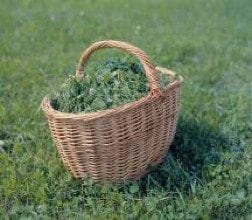“Why not just use the very best variety instead of a mixture?” This is a relevant and frequent question raised by turf- and forage customers and end-users. The simple answer, which is supported by many investigations, trials, and experiences, is that overall performance of a mixture supersedes that of a single variety.
A couple of examples can illustrate this. In forage, Wit, J. de et al. “Grassland Science in Europe”, vol. 18, 2013, demonstrated an 8-14% dry matter yield increase by adding more species and diversity to mixtures. C. Huyghe and I. Litrico in “Fourrages 2008” also discovered similar findings.
Reasons why forage mixtures perform better than straights:
- No single grass variety show top performance in all conditions
- Mixed genetics will on average give a higher degree of disease resistance and thus higher yields
- Mixtures are less prone to weather-induced crop loss
- Mixtures can be formulated to show complementarity in time and space (greater persistency)
- Mixtures of grasses with clover or alfalfa comprise a perfect balance between energy- and protein-supply
One of the key points in future agriculture will be sustainability and lower input. The next generation of food buyers already asks for it, and we observe several farmers seeking alternatives for expensive and less sustainable protein import. Here clover/alfalfa/grass mixtures will play an important role as described in the February issue of European Seed.
Farming on less productive soils will also create a further demand for multi-species mixtures with inclusion of herbs selected for agricultural- and feeding-value and adding to plant diversity.
Reasons why turf mixtures perform better than straights:
- Like for forages, no single grass variety show top performance in all conditions
- Mixtures allows for a longer growth season than single species/varieties
- Mixtures will stay green longer during summer droughts
- Mixtures offers a good balance between fast germination and good wear tolerance
- Mixtures containing smooth-stalked meadow-grass and creeping red fescue are self-repairing on areas with great mechanical wear
- In hot areas, mixtures will contain varieties that continue to grow when other components go dormant (summer/winter)
- Mixed genetics will on average give a higher degree of disease resistance and thus higher yields
The advantage of turf mixtures is greatly exemplified in your own home garden. You will probably have shady areas, paths with intensive wear, playing areas with high wear and sunny areas. When using turf mixtures, after some years you will mainly find red fescue in the shade, smooth-stalked meadow grass and perennial ryegrass on the areas with wear and dominantly perennial ryegrass on the sunny areas. The beauty is, thanks to that one multipurpose mixture of turf grass seed, your home pitch appears uniform and strong in all areas.







